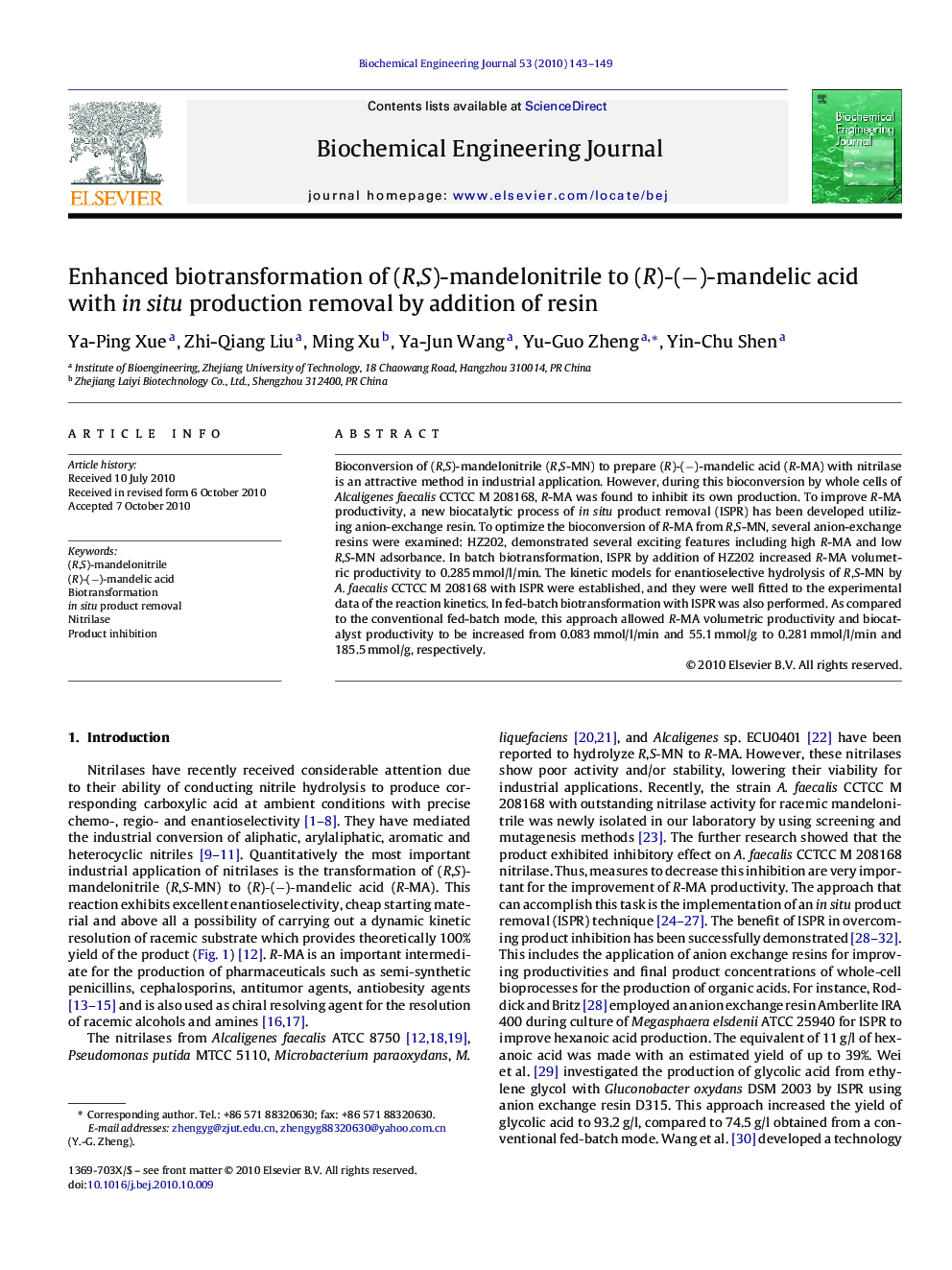| Article ID | Journal | Published Year | Pages | File Type |
|---|---|---|---|---|
| 3820 | Biochemical Engineering Journal | 2010 | 7 Pages |
Bioconversion of (R,S)-mandelonitrile (R,S-MN) to prepare (R)-(−)-mandelic acid (R-MA) with nitrilase is an attractive method in industrial application. However, during this bioconversion by whole cells of Alcaligenes faecalis CCTCC M 208168, R-MA was found to inhibit its own production. To improve R-MA productivity, a new biocatalytic process of in situ product removal (ISPR) has been developed utilizing anion-exchange resin. To optimize the bioconversion of R-MA from R,S-MN, several anion-exchange resins were examined: HZ202, demonstrated several exciting features including high R-MA and low R,S-MN adsorbance. In batch biotransformation, ISPR by addition of HZ202 increased R-MA volumetric productivity to 0.285 mmol/l/min. The kinetic models for enantioselective hydrolysis of R,S-MN by A. faecalis CCTCC M 208168 with ISPR were established, and they were well fitted to the experimental data of the reaction kinetics. In fed-batch biotransformation with ISPR was also performed. As compared to the conventional fed-batch mode, this approach allowed R-MA volumetric productivity and biocatalyst productivity to be increased from 0.083 mmol/l/min and 55.1 mmol/g to 0.281 mmol/l/min and 185.5 mmol/g, respectively.
Research highlights▶ R-MA exhibited inhibitory effect on A. faecalis CCTCC M 208168 nitrilase. ▶ Addition of HZ202 in the reaction system could eliminate the product inhibition. ▶ ISPR by addition of HZ202 enhanced R-MA productivity from R,S-MN.
